Common Yield Data Errors and How to Avoid Them
A successful season culminates at harvest with the removal of crops from the field and documentation of yield. Not only is it satisfying to watch the yield monitor during harvest, but the data that’s collected can cast light on your agronomy program and inform decision-making for the next season. However, what happens when these data are inaccurate? Unfortunately, this is a common issue as harvest data is rarely perfect straight out of the combine.
There are many potential causes of inaccurate data. These range from running multiple machines with different calibrations, incorrect header height and cut width settings, and speed and travel distance errors. Fortunately, each of these issues have characteristic symptoms that can be diagnosed by looking at yield data. These issues can then be addressed in the combine or by repairing data in the John Deere Operations Center.
Multiple Machines
A common issue with running multiple machines in the same field is the machines having different calibration values in the display. This can result in stripes or areas of the field that consistently under- or over-report yield (Figure 1). One of the best ways to avoid this issue is to ensure that the multiple machines are properly calibrated and use a system such as John Deere’s ActiveYield. This will ensure that the yield data that is being collected is consistent between machines.
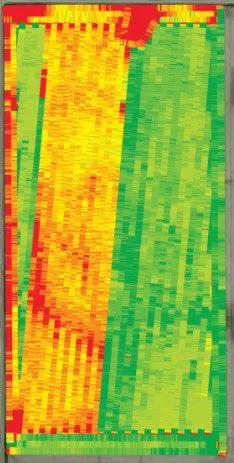
In cases where the issue wasn’t caught before or during harvest, the John Deere Operations Center is equipped with tools to post-calibrate yield data from each machine. This feature can be found in Field Analyzer. Inside this tool, there is an Edit Field Data option which allows you to adjust yield variability between the machines using sliders (Figure 2).

Header Height
Header height issues are the result of two primary errors. The first is an issue with the header height switch on the combine which results in the machine not detecting when the header is raised or lowered, and therefore isn’t told to record yield data. This can result in either no data being collected at all, or gaps in the yield data if the issue is intermittent (Figure 3).
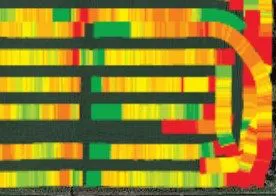
The second potential header height issue results from operator error, typically from leaving the header in the harvest position between fields or not raising and lowering the header correctly in the headlands or unplanted areas of the field. This can result in missing or inaccurate data (Figure 4).
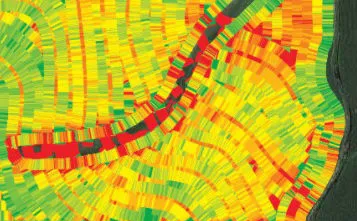
To ensure that you don’t encounter header height issues, it’s critical to periodically check for codes on the in-cab display to ensure all sensors and systems are working properly. It’s also good practice to check yield maps that are being collected in the John Deere Operations Center to catch issues early. Doing this can allow you to fix issues and prevent missing data for future fields.
Unfortunately, there is little that can be done for fields that are missing data. In the case of intermittent sensor issues which result in incomplete yield data being collected, it may be possible to use a process called interpolation. Interpolation will use the existing data points to estimate what the missing areas in between may be, allowing you to fill in the map. While not perfect, interpolation can result in fairly accurate maps depending on the extent of the missing data.
Cut Width
It’s rare to harvest a field that is perfectly square and just the right size for an even number of complete combine passes. As a result, most fields will experience cut width issues. These are especially common in fields with irregular shapes or terraces. When the combine harvests an area that doesn’t fill the entire width of the header, which is common at the end of a series of passes or next to an irregular boundary, yield is often underestimated (Figure 5).
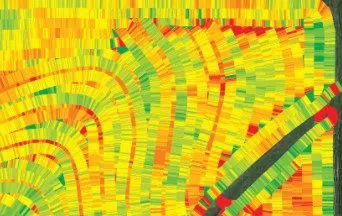
While difficult to avoid in most fields, there are some best practices that can improve resulting yield maps. One method is utilizing John Deere’s newly released AutoPath feature. AutoPath is the most accurate guidance system on the market and can be used to calculate the most efficient guidance lines for each piece of equipment based on operating width and the location of crop rows. This can help reduce incomplete passes.
In handling the data after harvest, the John Deere Operations Center also offers some data smoothing in Field Analyzer by using the Dry Yield Contour layer, which can be further adjusted and refined in Field Analyzer Beta. While not perfect, this can smooth out the data and result in a more useable yield map.
Speed and Travel Distance
Another very common problem is speed and travel distance issues. Errors resulting from speed and travel distance are commonly seen at the end or beginning of a pass when the combine is accelerating or decelerating, causing the yield monitor to respectively underestimate or overestimate yield (Figure 6). These types of errors can also be present in the middle of a field if the combine is quickly decelerated, which happens if there is a machine issue or field obstacle and the combine needs to be stopped quickly. In these instances, yield can be overestimated by several hundred bushels per acre. This is due to the machine traveling a very short distance while continuing to process the full amount of grain.
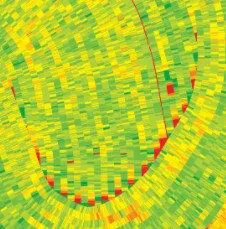
These types of yield data issues can be avoided by making gradual speed adjustments to the combine. In cases where this is not possible, the John Deere Operations Center will automatically remove outlier data that is clearly erroneous, resulting in improved yield maps.
Conclusion
Yield map errors can occur from multiple causes and are virtually unavoidable. While errors will occur, yield data can be improved through a few best practices. The primary method of improving yield data should always be by improving the physical collection of the data through properly calibrating and operating the combine. In cases where this is not possible or mistakes occur, the John Deere Operations Center provides data analysis tools to filter data, post-calibrate, and improve yield visualization. These practices can result in more useable yield data that will inform agronomic decision making for future seasons.
Want assistance collecting, analyzing, or utilizing your data? Ask us about E3 Manage or E3 Edge value-added services!